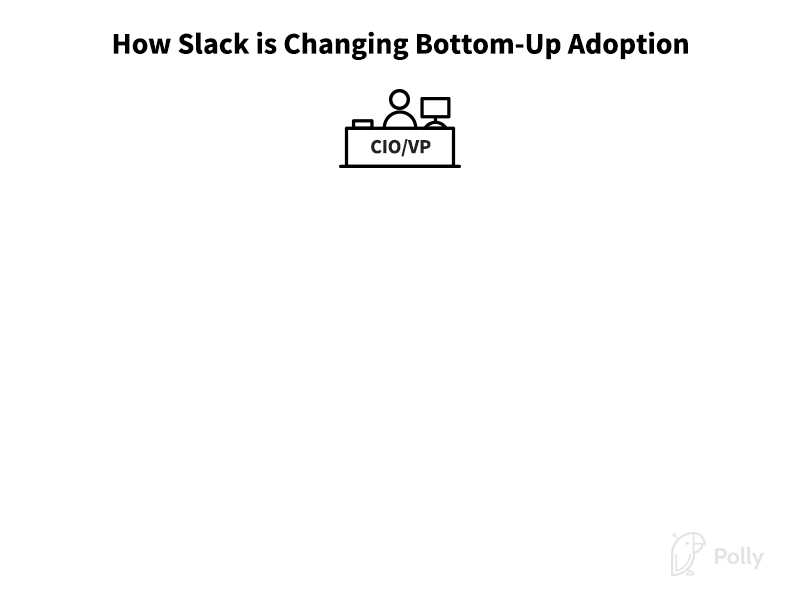Slack isn’t just an example of successful bottom-up adoption, it’s also a catalyst that is making it easier for other SaaS companies to do the same thing.
Good software is getting harder and harder to hide from employees in the enterprise. For too long, individuals have had no control over the software they use on a day-to-day basis; those decisions were made at the top by CIOs, VPs, or other executives.


Slack is another success story of a SaaS company winning enterprise contracts through bottom-up adoption within organizations. The difference with Slack compared to the companies described above is that Slack is also acting as an enabler for other applications, allowing them to use Slack as a distribution channel to reach teams and individuals.
Facilitating bottom-up adoption
As organizations adopt messaging applications like Slack and Microsoft Teams, it’s changing the dynamic of how they function. These enterprise companies are increasingly operating like a group of states within a country - while there are norms and rules that the entire company adheres to, each group or team has a certain level of freedom to define some of its own norms. In Slack and Teams, that breaks down into channels and teams operating as a federated organization.
Since Slack was frequently adopted by individual teams within a single organization, these organizations have already established a culture of allowing teams to choose their own software. Microsoft has also wholeheartedly adopted this principle by not just building their product for teams, but actually naming their product Teams, and giving the power to anyone within the organization to spin up their own Team.
By creating a distribution platform, Slack and Teams only make it easier for other SaaS companies to reach the end user. It also makes it significantly easier to convince a smaller team to make a purchasing decision, rather than requiring the CIO to make a purchasing decision for the entire company. So while bottom-up adoption has been trending over the past few years for SaaS companies distributing on the web, these messaging platforms are making it the norm.
Slack is speeding up the Flywheel
Slack isn’t just making it easier for SaaS companies to utilize a bottom-up distribution strategy - it is actually making the entire flywheel cycle Tunguz described happen way faster.
A huge problem for enterprise SaaS companies has been that too often the buyer persona and user persona are actually different people in the enterprise. It is hard to get someone to buy the product and communicate value to them if they will never touch or use the product.
One of the key value-props for Slack-based teams is the increased level of transparency it creates, and how it helps managers see what’s going on at the ground level, and individuals see what’s going on at the top.
This transparency also helps bridge the gap between the buyer and user persona, since the buyer can tangibly see the value the software brings to the team by witnessing the user-app interaction within channels. The buyer doesn’t need an army of advocates vouching for the software – if it is truly making teams more productive, they can see the benefit of that themselves.

We’ve seen this scenario take place a number of times with Polly, where one product team is using our pulse survey product to gather sentiment metrics on their sprints, and it immediately gets the attention of the VP of Engineering. Soon after, the process is quickly adopted by the other product teams as well. This scenario plays out as a hybrid of a top-down and bottom-up approach, where the initial entry point might be at the bottom, but adoption is being driven by all directions.
We’re still in the early days of enterprise apps being built on top of messaging platforms like Slack and Microsoft Teams. But as these platforms become more commonplace, so will apps that sit on top of these platforms - apps that are delivered in a familiar UI, require minimal onboarding, and demonstrate value to the end user quickly. Over time, bottom-up adoption won’t just be another enterprise distribution strategy, it will be the strategy.
Note: The opinions and views in this post are those of the Author. They do not represent the views of Slack or Microsoft Teams.

Written by Samir Diwan
Thrives in chaos. Canadian. Wants to be an astronaut when he grows up.








